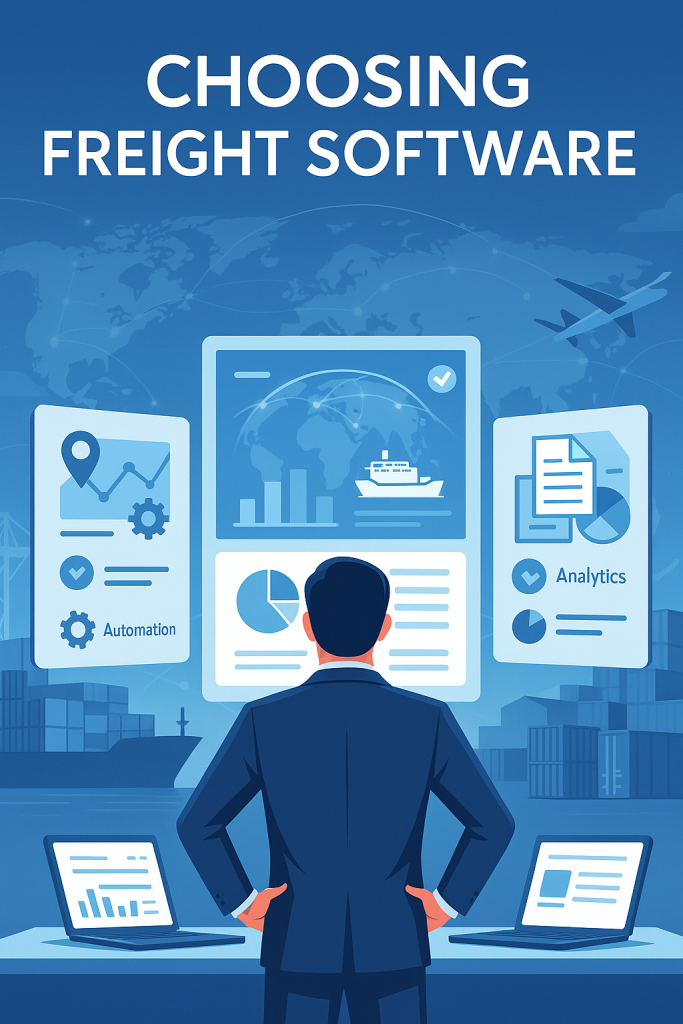How to Choose the Right Freight Forwarder Software for Your Needs

1. 🧠 Understand Your Current Workflow
Start by mapping out how your team currently handles quotes, bookings, documents, and client updates. Identify bottlenecks, manual processes, and areas with high error rates. Knowing your pain points makes it easier to spot what features you actually need in a system — and avoid paying for extras you won’t use.
2. 📦 Prioritize Core Functionalities
Your freight software should handle the full shipment lifecycle. Look for tools like real-time tracking, automated document generation, multi-modal shipment management, invoicing, and customer portals. These aren’t bonuses — they’re essential. If a platform doesn’t offer these, it’s not worth your time.
3. 💬 Consider User Experience
Even the most powerful platform won’t help if your team can’t use it. Choose software with a clean interface, easy onboarding, and minimal training requirements. Look for demos or free trials so your staff can test usability in real conditions before committing.

4. 🔗 Check Integration Capabilities
Freight operations don’t exist in a vacuum. Your software should integrate with carriers, customs systems, CRM, and accounting tools. API and EDI support are must-haves if you want to keep data flowing seamlessly between systems and reduce double entry.
5. 🔐 Evaluate Security and Compliance
You’re handling sensitive information — client details, customs data, financial records. Make sure the platform offers robust cloud security, encrypted storage, and compliance with industry standards like GDPR or CTPAT. Also, look for permission-based access to control who sees what.
6. 📈 Think Long-Term Scalability
Will the software still work for you when you double your shipments or open a second office? The right system should grow with your business. Look for customizable modules, flexible pricing, and scalable infrastructure that won’t require a full switch later.

7. 🧩 Align with a Freight-Focused Solution
General ERPs can’t compete with platforms built specifically for freight forwarders. Look for a provider that understands your industry — not just in features, but in support and updates. Solutions like Linbis are designed for logistics workflows from the ground up, making them faster to implement and easier to optimize.

🔍 Final Thought
Choosing freight software isn’t just an IT decision — it’s a growth strategy. Evaluate based on how well a platform matches your needs, simplifies your operations, and supports your clients.
🎯 The right choice will save you time, reduce costs, and set the foundation for long-term success.
🔗 Explore solutions built for freight forwarders. Start with a free demo at Linbis.com
